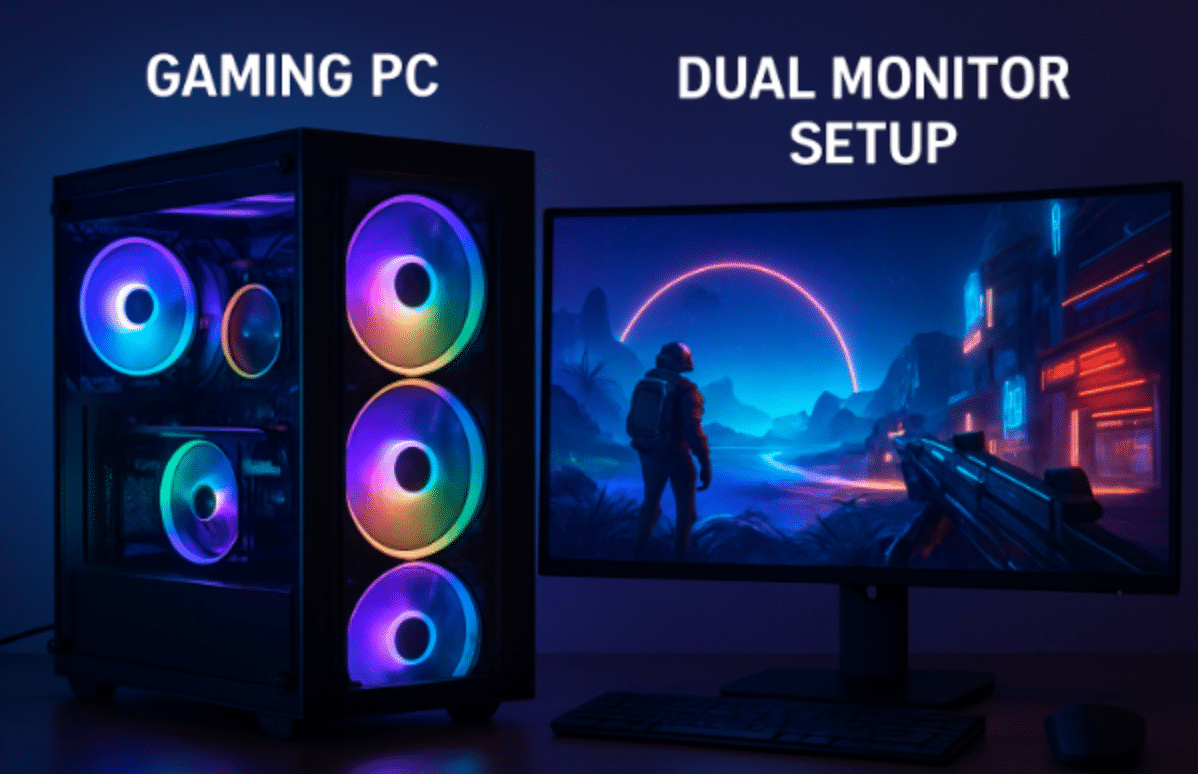Key Takeaways
- AI-assisted performance tuning optimizes efficiency and enhances the gaming experience.
- Leading-edge GPUs with ray tracing are becoming standard in top models.
- Innovative cooling technologies enhance reliability and longevity.
- Users can now personalize many aspects of their machines, from hardware to lighting.
- Seamless VR and AR support opens new horizons in immersive gameplay.
- Eco-friendly practices are transforming the design and construction of gaming PCs.
The landscape of PC gaming continues to evolve rapidly, driven by advancements in graphics, processing power, and immersive experiences. As new game titles demand higher performance, players are increasingly evaluating hardware that can deliver smooth gameplay and future-proof reliability. Prebuilt systems have emerged as a strong contender, offering balanced components without the hassle of manual assembly.
Gamers seeking peak performance and next-generation features are flocking to prebuilt gaming PCs to keep up with the fast-evolving world of gaming hardware. With each year, innovations redefine what’s possible, and today is set to deliver groundbreaking changes in both power and user experience. Whether you’re a seasoned enthusiast or new to PC gaming, understanding these trends can help you choose the best system for your entertainment and creative needs.
The market for prebuilt gaming PCs has seen a surge in advanced technologies, bringing top-tier gaming to a broader user base and reducing the complexity often associated with building a system from scratch. Manufacturers are focusing on integrating AI, adopting modular architecture, supporting immersive experiences like VR and AR, and taking sustainability seriously—all of which promise to make gaming more accessible, enjoyable, and responsible.
AI-Driven Performance Optimization
Artificial Intelligence is transforming prebuilt gaming PCs by orchestrating smarter, more fluid resource management. AI-powered software monitors workload, automatically distributing tasks between the CPU and GPU to deliver the smoothest possible gameplay. One clear example is Nvidia’s DLSS, which utilizes deep learning to upscale graphics, offering high-resolution visuals without dramatically increasing system requirements. These real-time optimizations enable both casual and competitive players to achieve stable frame rates and beautiful graphics without manual tweaking.
AI integration also extends to background processes, ensuring system health and longevity. Automated diagnostics and downtime predictions help prevent unexpected crashes, allowing users to focus on playing rather than performing system maintenance. Intelligent tuning for game-specific profiles enables gamers to maximize their enjoyment of each experience with minimal effort.
Next-Generation Graphics Cards and Ray Tracing
Today, we welcome a wave of GPU advancements, with Nvidia’s RTX 50 series and AMD’s Radeon RX 9000 series setting new standards. These graphics cards introduce improved ray tracing for real-time, movie-quality lighting and reflection effects. With more titles—both indie and AAA—supporting these technologies, gamers in every price bracket can enjoy immersive, visually rich worlds.
Ray tracing and AI-based upscaling don’t just create stunning visuals; they allow lower-tier systems to keep pace with ever-increasing graphical demands. This democratization means you no longer need a top-end rig for high-end results, as even mainstream systems can deliver impressive performance.
Advanced Cooling Solutions
Maintaining high performance requires superior thermal management, and today’s leading prebuilt gaming PCs don’t disappoint. Liquid and hybrid cooling systems are fast replacing traditional air solutions, offering quieter operation and cooler temperatures even during marathon gaming sessions. These setups often include AI-managed fans that adjust their speed in response to real-time temperature readings, further safeguarding vital components and enhancing system stability.
Advanced airflow engineering and sleek chassis design support both efficient heat dissipation and visual appeal, ensuring that performance and aesthetics are in harmony.
Modular Designs and Customization Options
Gone are the days when prebuilt meant inflexible. Top manufacturers now emphasize modular components, allowing users to swap out GPUs, RAM, or storage drives easily. This future-proofs investments and enables frequent upgraders or tinkerers to keep systems relevant long after the initial purchase. Modular power supplies, cable management systems, and tool-less access panels further simplify upgrades and maintenance.
Personalization isn’t limited to internals, either. Customizable RGB lighting, transparent side panels, and even cable color options let gamers create a setup that’s uniquely theirs—whether that’s elegantly understated or brilliantly bold.
Integration of VR and AR Technologies
As immersive environments become increasingly integral to today’s gaming culture, pre-built PCs are being designed with the performance needs of virtual reality (VR) and augmented reality (AR) in mind. Manufacturers are pairing powerful CPUs with high-end, ray-tracing-capable GPUs to ensure these systems can handle the heavy rendering, tracking, and responsiveness required for smooth VR and AR experiences. This combination reduces motion blur and latency, making gameplay feel more natural and engaging. Many prebuilt PCs also come optimized for popular VR platforms right out of the box, making setup easier for new users. Altogether, this thoughtful hardware integration is helping bring next-generation interactive worlds to a broader audience, supporting an expanding range of immersive gaming titles and applications.
Sustainability and Eco-Friendly Designs
Responsible computing is becoming an increasingly important priority in the gaming world, and many pre-built PC manufacturers are actively responding to this shift. More systems now incorporate recycled plastics, metals, and packaging, making production less resource-intensive. Energy-efficient power supplies and optimized cooling designs help reduce electricity usage during gameplay and everyday use. Additionally, companies are paying closer attention to repairability and modular builds, allowing users to replace individual parts rather than discard entire systems when upgrades or fixes are needed. These practices significantly reduce electronic waste and encourage longer product life cycles. With clearer green certifications and carbon-reduction efforts, gamers can make more informed choices about hardware that strikes a balance between performance and environmental responsibility.
Conclusion
Today’s market for pre-built gaming PCs is evolving rapidly, offering a level of performance and reliability that was once reserved for custom-built machines. Manufacturers are now integrating AI-assisted system optimization, which automatically adjusts performance settings for smoother gameplay and reduced lag. Cutting-edge GPUs and CPUs deliver higher frame rates and support for ultra-realistic visuals, while improved cooling systems ensure components run efficiently and quietly. Many brands are also embracing eco-conscious materials and energy-efficient parts, reflecting a growing commitment to sustainability. These advancements make high-end gaming more accessible to a broader audience, removing the complexity of manual building while still offering opportunities for personalization. Staying updated on these trends helps ensure you select a system that aligns with your gaming goals and values.





